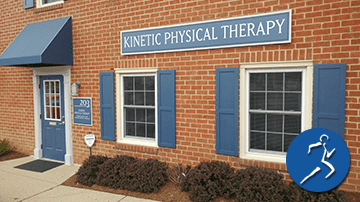 Plantar Fasciitis is no joke! It can take some time to treat it. You’ll know if you have a scenario like this. You sit up in bed, put your feet on the floor and stand up for the first time of the day. You take a few steps toward your bedroom door. A sharp, stabbing pain hits the heel of your foot. Ouch!
Plantar Fasciitis is no joke! It can take some time to treat it. You’ll know if you have a scenario like this. You sit up in bed, put your feet on the floor and stand up for the first time of the day. You take a few steps toward your bedroom door. A sharp, stabbing pain hits the heel of your foot. Ouch!
As you walk around, the pain lessens a bit. But boy, those first few steps of the day sure do smart every morning. This pain could be a sign you suffer from plantar fasciitis.
What is Plantar Fasciitis?
Everyone has a band of tissue that connects the heel bone to the base of the toes. That tissue is called the plantar fascia. It is thick to cover the bones on the bottom of the foot. The fascia creates the arch of the foot.
Plantar fasciitis occurs when the facia has small tears. Tension and stress can cause these tears on the fascia. Most times, with plantar fasciitis, the cause of damaged facia might be unclear. However, risk factors may increase your chances of plantar fasciitis.
Who is More Likely to Develop Plantar Fasciitis?
Repeated tearing and stretching of the fascia can irritate or inflame it. You are more likely to develop plantar fasciitis if you:
- Are between the ages of 40 and 60
- Have an occupation that keeps you standing or walking for hours
- Are obese or gain significant weight suddenly
- Wear shoes with poor arch support
- Take part in physical activities that place a lot of stress on your heels, such as ballet or long-distance running
- Have a high foot arch or very flat feet
How Do I Know if I Have Plantar Fasciitis?
Many symptoms could indicate plantar fasciitis.
Usually, foot pain while taking a step is the worst in the morning. This is sometimes called “first-step pain.” Pain can also occur when you stand after sitting for a long time.
Another symptom could be foot pain after, not during, an intense physical activity. Performing jumping sports or running may bring on the pain.
Often those who suffer have pain while walking up stairs.
A swollen heel, a tight Achilles tendon, and arch pain are other classic symptoms of plantar fasciitis.
How Physical Therapy Can Help
Using a physical therapist to alleviate foot pain can help you recover faster. It may also cost less to address the problem with a physical therapist rather than delaying treatment.
A heat and ice treatment plan designed by a physical therapist can relieve inflammation and pain. This offers natural immediate pain relief without the use of drugs.
Of course, it’s much easier to heal a condition if the cause is known. Trained physical therapists can evaluate and find the cause of the pain. Through a series of questions and an assessment of the foot, or your gait, the contributing factors that lead to the pain can be addressed.
Stretching exercises can improve movement in the ankle and the facia. The activities provided by a trained professional can help avoid surgery. Exercises also reduce pain and decrease the chance of reinjury, once healed.
Finally, a physical therapist can also educate you on devices to help reduce the pain. Shoe inserts, proper footwear, and a night splint are all tools that can ease plantar fasciitis.
Treating the Pain
Let’s face it. Those flip-flops with no arch support and soft soles aren’t doing your already sore feet any favors. If foot pain keeps you from enjoying everyday activities, it’s time to contact us at Kinetic Physical Therapy.
We often work with patients who suffer from plantar fasciitis and have outstanding success in treating the condition. Please get in touch with us so you can walk foot-pain free.


